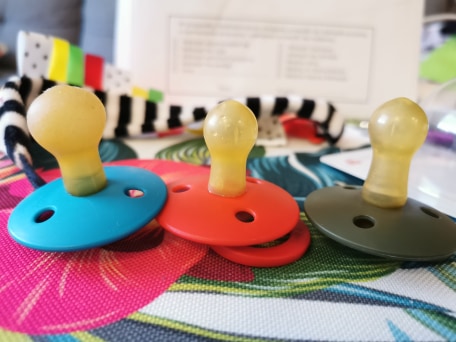Article: Why is the new pacifier smaller?

Why is the new pacifier smaller?
Does your baby use our natural rubber latex pacifiers? And have you experienced that the new pacifier you bought, looks smaller than the old ones? Do not worry there is a completely natural explanation for this.
Natural rubber latex expands
Natural Rubber latex is a 100% natural material made from a sticky milky fluid tapped from the Hevea tree. The fluid is refined to the brown/yellow rubber you know from your pacifiers; a super soft, elastic, and resilient material very much resembling the mother’s soft nipple.
But it comes with a natural aging process affected by natural influences like UV light, air, saliva, and heat. The elasticity of the material allows the nipple to change shape and size because of the baby’s strong vacuum, this means that the nipple in some cases can expand if it is not replaced in time.
Some children will not take a pacifier that is different from the one the child is used to. So, if you experience that the pacifier expands replace the pacifier before the child gets used to the bigger nipple size.

Replace the pacifiers
We recommend a replacement of pacifiers every 4-6 weeks for both safety, and hygienic reasons and since the natural rubber latex nipples in some cases can expand. Whenever you experience a change in the material the pacifier must be replaced.
Natural rubber latex pacifiers must be replaced when you see the following signs:
- Changes in the surface
- Changes in size
- Change in shape
- Rupture in the material
- Becomes brittle or sticky
Replace the pacifier immediately if you notice any of these changes. When your baby has teeth make sure to pull the nipple in all directions and inspect it carefully before use and replace the pacifier at the first sign of damage or weakness.








